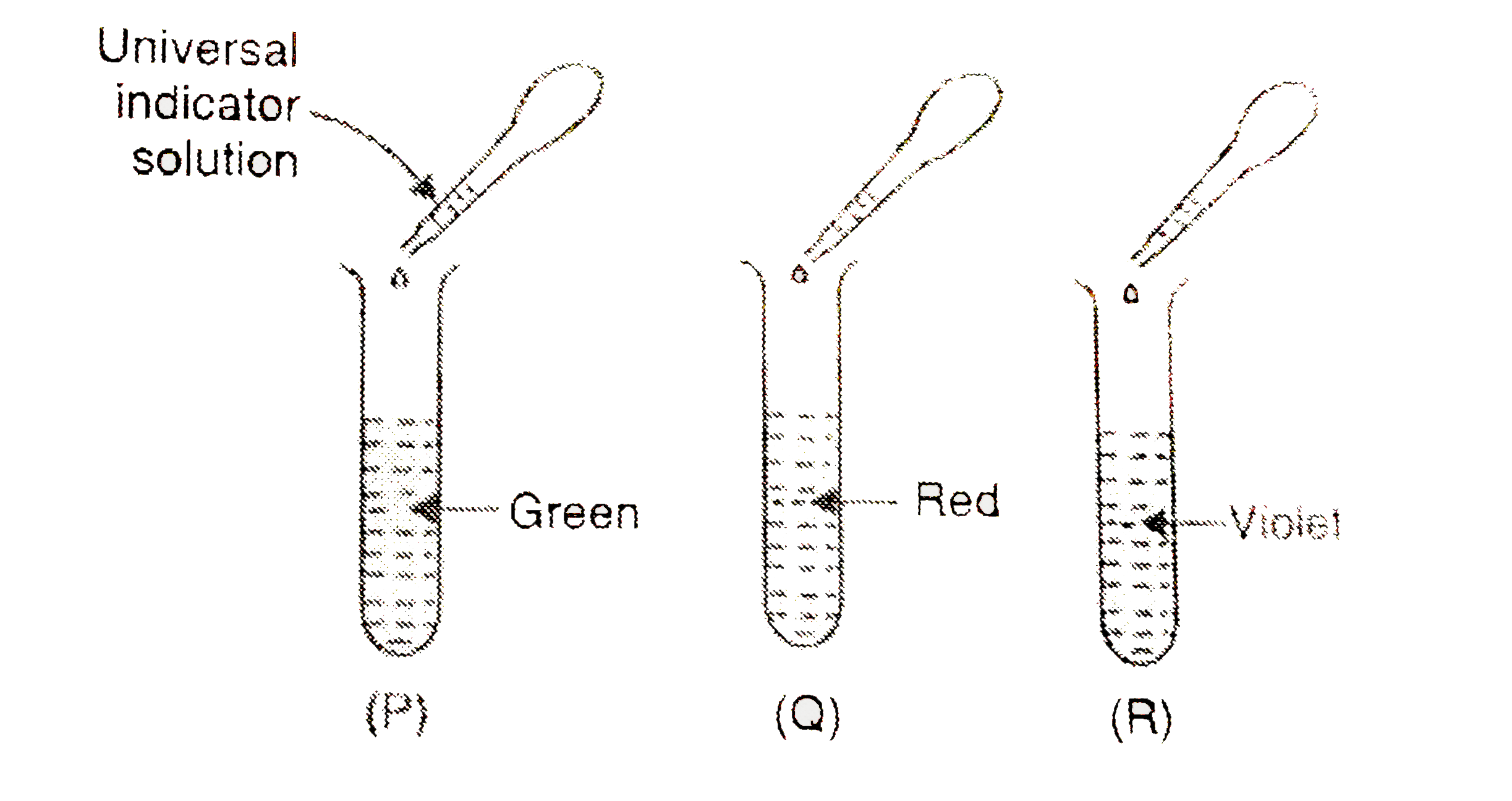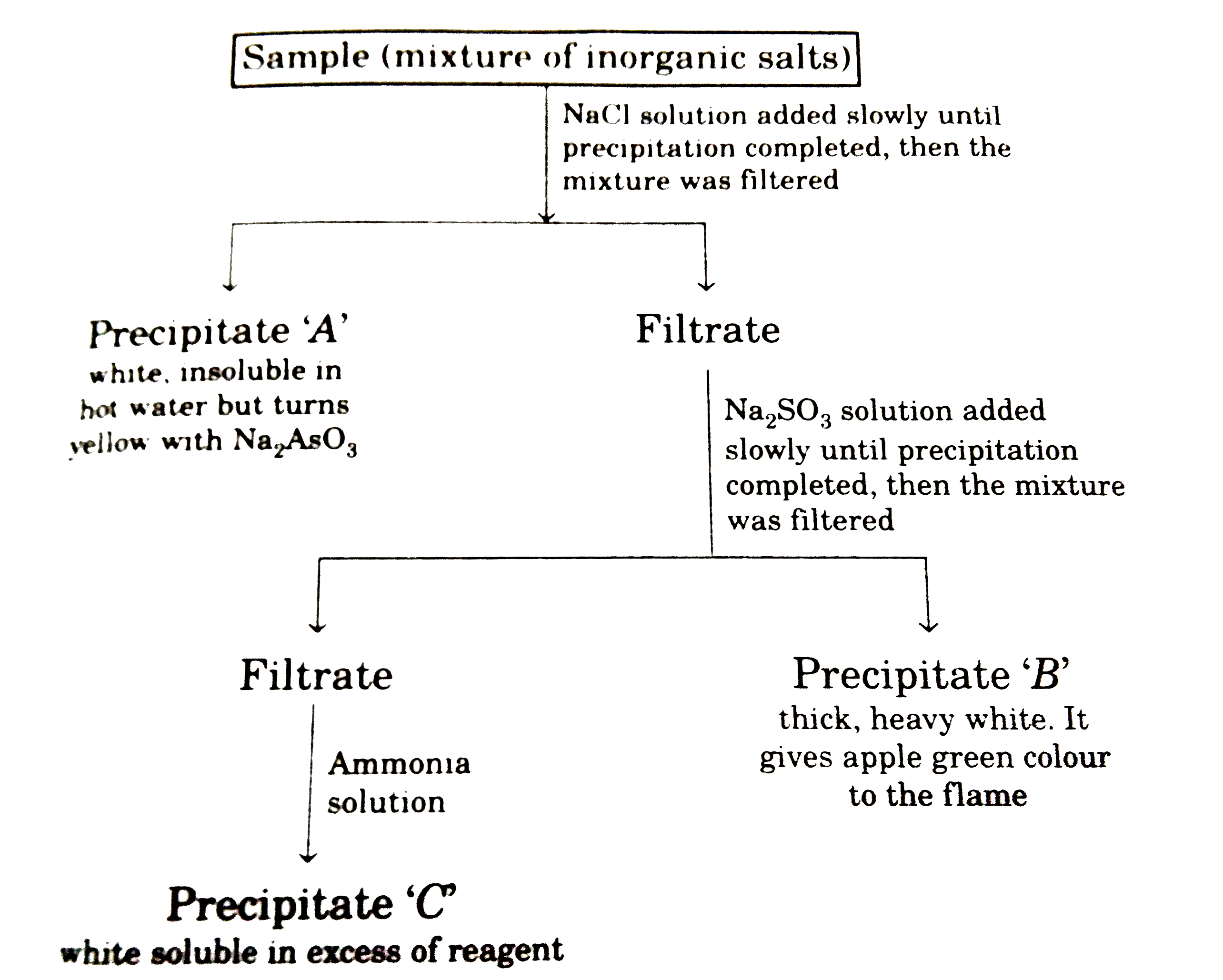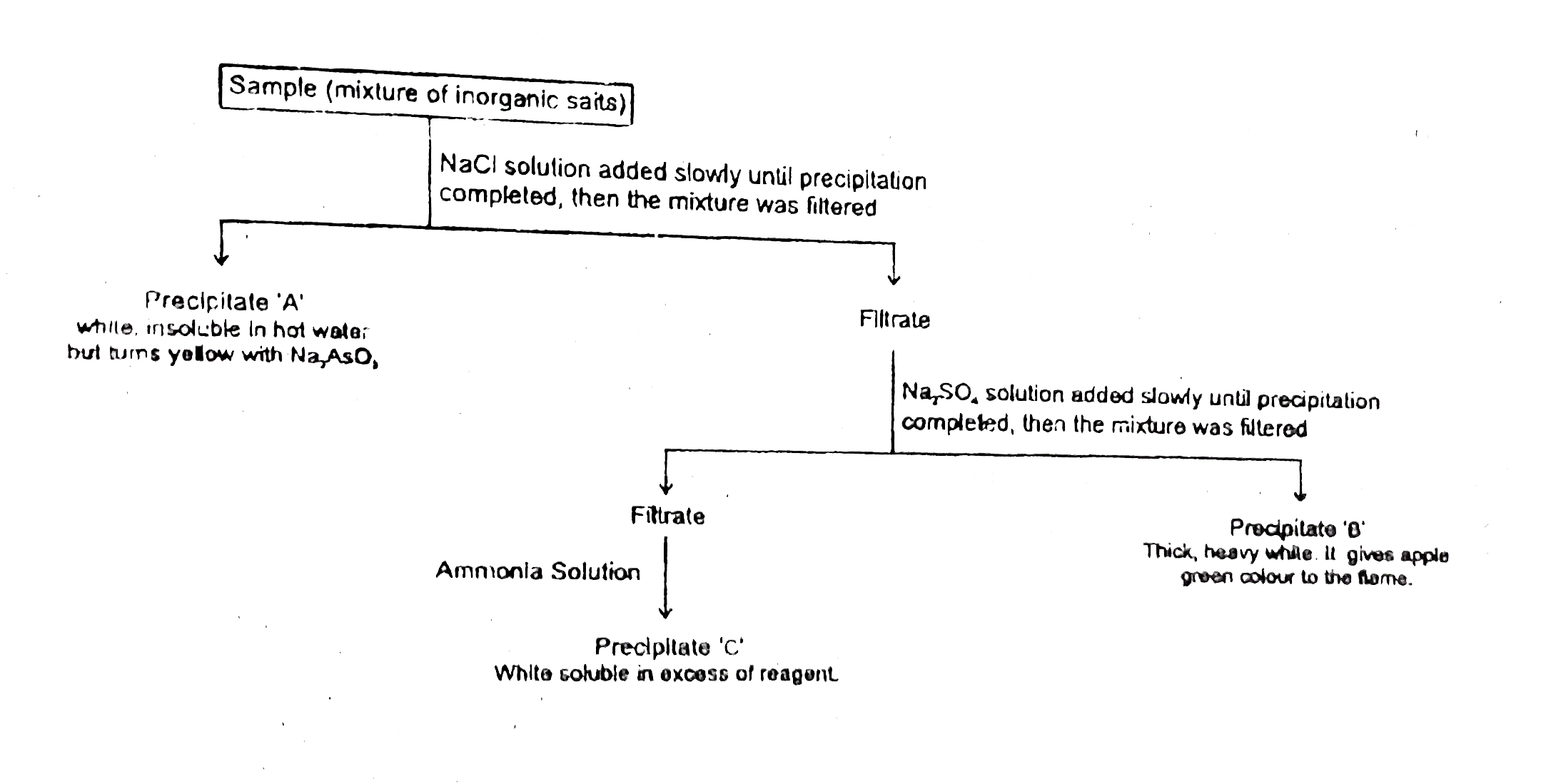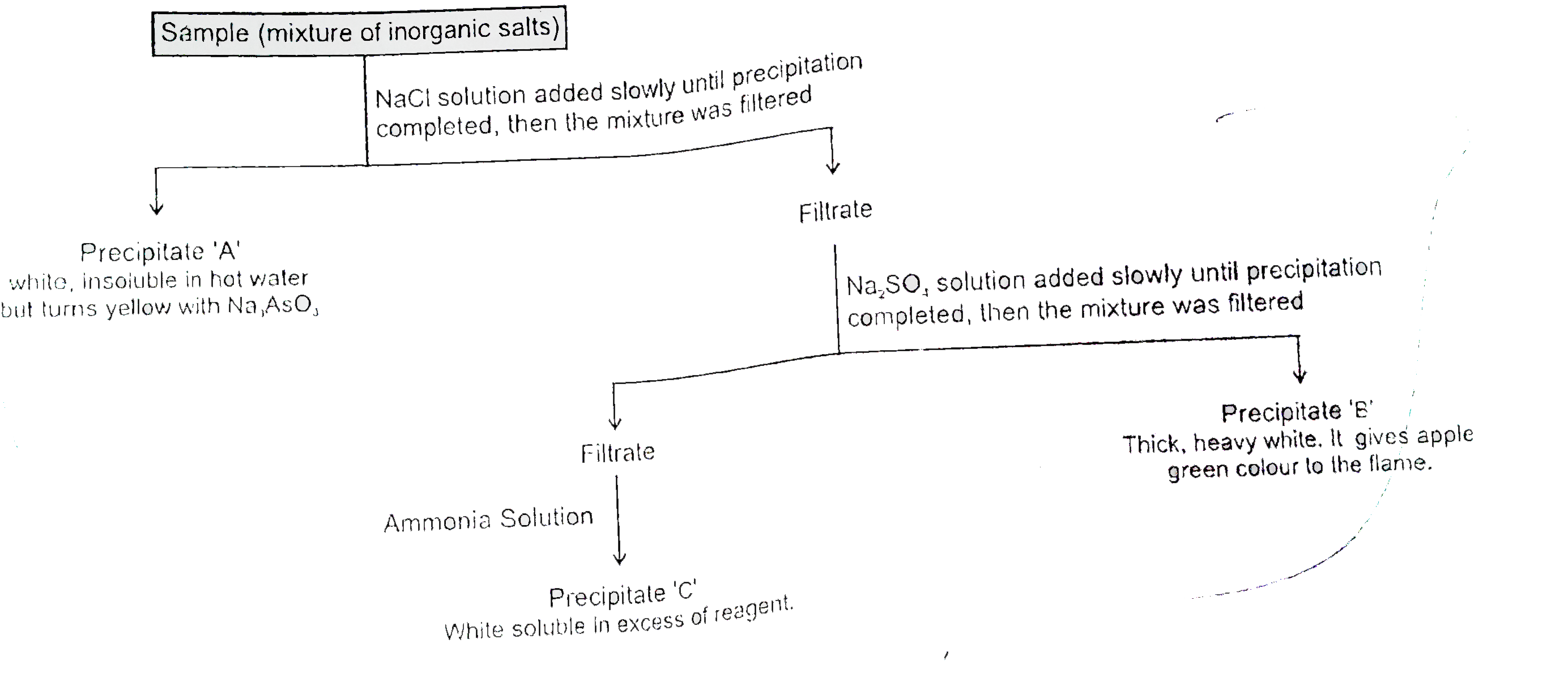A student was given four unknown colourless samples labelled A, B, C and D and asked to test their pH using pH paper. He observed that the colour of pH paper turned to light green, dark red, light orange and dark blue with samples A, B, C, and D respectively. The correct sequence of increasing order of the pH value of samples is
A<B<C<D
A<D<C<B
C<B<A<D
B<C<A<D
The correct Answer is:D
To determine the correct sequence of increasing order of the pH values of samples A, B, C, and D based on the color changes observed on the pH paper, we can follow these steps:
1. Identify the Color Changes and Corresponding pH Values:
- Sample A: Light Green
- Sample B: Dark Red
- Sample C: Light Orange
- Sample D: Dark Blue
2. Interpret the Color Changes:
- Light Green indicates a neutral pH, which is around 7.
- Dark Red indicates a highly acidic solution, likely with a pH around 1.
- Light Orange indicates a less acidic solution, with a pH greater than 1 but still less than 7.
- Dark Blue indicates a strongly basic solution, with a pH significantly greater than 7.
3. Determine the pH Values:
- Sample A (Light Green) = pH ≈ 7
- Sample B (Dark Red) = pH ≈ 1 (highly acidic)
- Sample C (Light Orange) = pH > 1 and < 7 (acidic)
- Sample D (Dark Blue) = pH > 7 (basic)
4. Arrange the Samples in Order of Increasing pH:
- The order of increasing pH values based on the interpretations:
- Sample B (Dark Red) < Sample C (Light Orange) < Sample A (Light Green) < Sample D (Dark Blue)
5. Final Sequence:
- The correct sequence of increasing order of the pH values of the samples is:
- B < C < A < D
- Sample A: Light Green
- Sample B: Dark Red
- Sample C: Light Orange
- Sample D: Dark Blue
- Light Green indicates a neutral pH, which is around 7.
- Dark Red indicates a highly acidic solution, likely with a pH around 1.
- Light Orange indicates a less acidic solution, with a pH greater than 1 but still less than 7.
- Dark Blue indicates a strongly basic solution, with a pH significantly greater than 7.
- Sample A (Light Green) = pH ≈ 7
- Sample B (Dark Red) = pH ≈ 1 (highly acidic)
- Sample C (Light Orange) = pH > 1 and < 7 (acidic)
- Sample D (Dark Blue) = pH > 7 (basic)
- The order of increasing pH values based on the interpretations:
- Sample B (Dark Red) < Sample C (Light Orange) < Sample A (Light Green) < Sample D (Dark Blue)
- The correct sequence of increasing order of the pH values of the samples is:
- B < C < A < D
Topper's Solved these Questions
Similar Questions
Knowledge Check
A student was given four unknown solutions in test tubes marked A,B,C and D and asked to test them with universal indicator solution. He observed that on putting universal indicator solution, the solutions A,B,C and D turned blue, orange, green and red respectively. The test tube which contains sodium chloride solution is:
AABBCCDDThe colour of the pH strip turned red when it was dipped into a sample. The sample could be :
Adilute sodium bicarbonate solutionBtap waterCdiluted sodium hydroxide solutionDdilute hydrochlorc acidOn adding a few drops of universal indicator solution to three unknown colourless solutions P,Q, and R taken separately in three test-tubes shown in the diagrams, a student observed the changes in colour as green in solution P red in solution Q and violet in solution R.
The decreasing order of the pH of the three solutions is:
 AP>Q>RBR>P>QCQ>P>RDR>Q>P
AP>Q>RBR>P>QCQ>P>RDR>Q>P
A student dips pH papers in solutions A and B and observes that the pH paper turns blue and orange respectively in them. What does he infer ?
View SolutionOn adding a few drops of universal indicator to three unknown colourless solutions (P), (Q) and (R ) taken separately in three test tubes shown in the following diagrams, a student observed the changes in colour as green in (P ), red in (Q) and violet in (R ). What will be the decreasing order of pH ?

View SolutionA student was given a sample of colourless solution contaning three cations and was asked to identify the cations: student carried out a series of reactions as given below.

Precipitates A,B and C are respectively:
View SolutionA student was given a sample of colourless solution containing three cations and was asked to identify the cations.Student carried out a series of reactions as given below.

Precipitates 'A','B' and 'C' are respectively :
View SolutionA student was given a sample of colourless solution containing three cations and was asked to identify the cations. Student carried out a series of reactions as given below.
Precipitates 'A','B' and 'C' are respectively:

View Solution
